Art Fairs
IFPDA Print Fair Bids Farewell to Park Avenue Armory and Prepares for Javits Center Move
The fair provides an excellent opportunity to discover affordable work by contemporary artists.
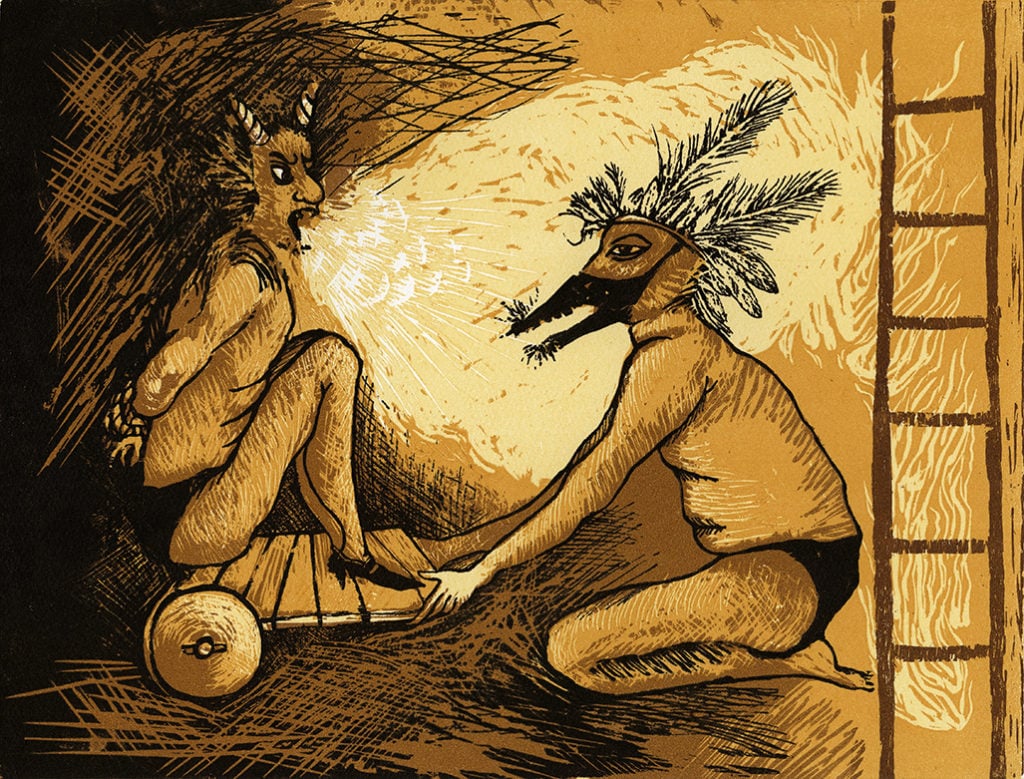
The fair provides an excellent opportunity to discover affordable work by contemporary artists.

Sarah Cascone

When the International Fine Print Dealers Association kicked off the 25th edition of its annual International Art Fair for Prints and Editions on November 3, it was in some ways the end of an era. When the fair returns in 2017, it will bid farewell to the Park Avenue Armory, heading for the Javits Center on the West Side.
“It’s a great opportunity for growth for us,” IFPDA executive director Michele Senecal told artnet News. “We can’t accommodate our membership in the current floor plan that we have.” She expects to expand from 84 to about 90 exhibitors, with larger booths, a dedicated programming space, and a cafe.
Taking over the Armory’s upper floor was not an option, Senecal told us. “That was something that was not offered to any other fair but TEFAF,” she said.
There has been much talk of the Armory cutting back on the number of art fairs it hosts, and that was also factor as IFPDA reached the end of their contract with the venue. “There will be more fairs that will be leaving,” Senecal admitted. However, one perk of showing at the Javits is flexibility on the dates. Next year, the print fair will run the weekend of October 28, to avoid overlapping with the New York City Marathon and its inflated hotel rates.
Senecal also praised the Javits’s light-filled “jewel box” space and it’s views of the Hudson, saying “it’s going to put us on the leading edge of where art fairs are going in the future” as the neighborhood develops into a cultural hub.
She is also, of course, excited about the fair’s current edition, citing artist who are “really pushing the boundaries” of the medium. “They play with your notion of what a print can be as a two-dimensional object,” Senecal said. “They really break through.”
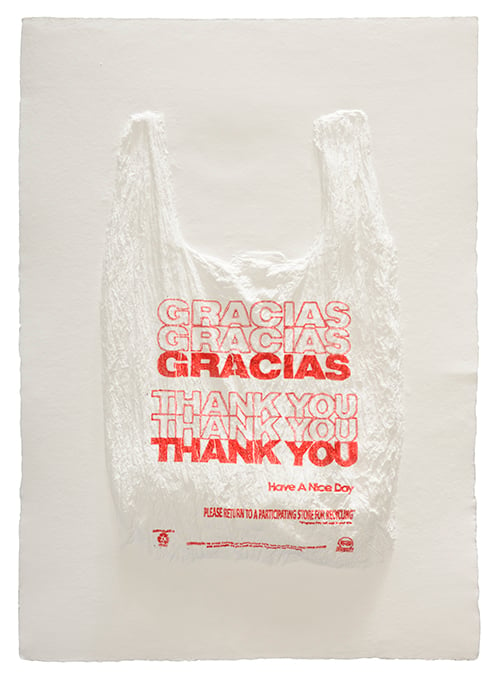
Analia Saban, Gracias Gracias Cracias Thank You Thank You Thank You (2016), Courtesy of Mixografía.
Such experimentation is perhaps most visible at Los Angeles’s Mixografia, which has developed a unique paper mill that works with 3-D shapes. This leads to fantastically clever works like Analia Saban‘s “Paper or Plastic” series ($5,500 each), which plays on the age-old question of what type of bag to use at the grocery store.
Now based in California, where plastic bags are banned, Saban has created hollow paper prints mimicking common bags seen in New York. The incredible trump l’oil effect takes Magritte’s Treachery of Images (Ceci n’est pas une pipe) to the next level.
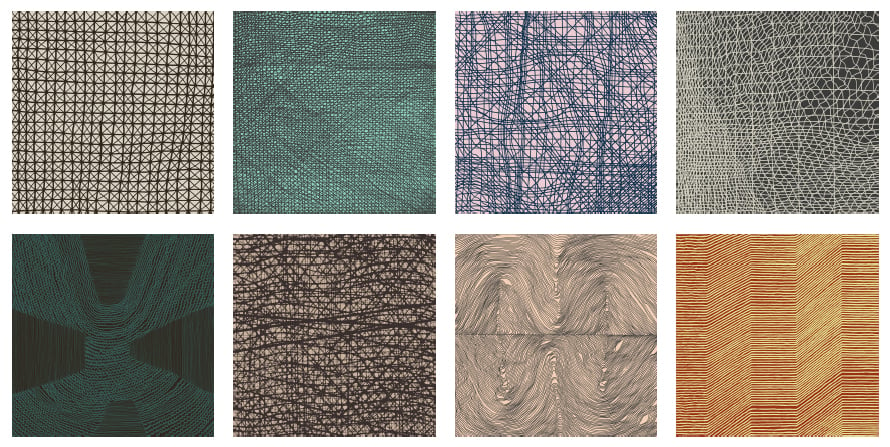
Fernando García Correa, “Ecos series II” (edition of 8), 2016, $2,500 each. Courtesy of Arróniz Arte Contemporáneo.
In general, the fair provides an excellent opportunity to discover affordable work by contemporary artists, such as Fernando García Correa and Mario Palacios Kaim, both being shown at the booth of Spain’s Arróniz Arte Contemporáneo. The striking presentation of the two men’s work features Kaim’s “16.9 Aspect Ratio” series, silver leaf-coated paper with geometric designs created through oxidization ($1,500 each), and Correa’s “Eco series II,” of metal tiles silkscreened with porcelain paint ($2,500 each).
The weather-impervious tiles can be displayed outside, and were inspired, Correa told artnet News, by his desire to bring “drawing into public space.”
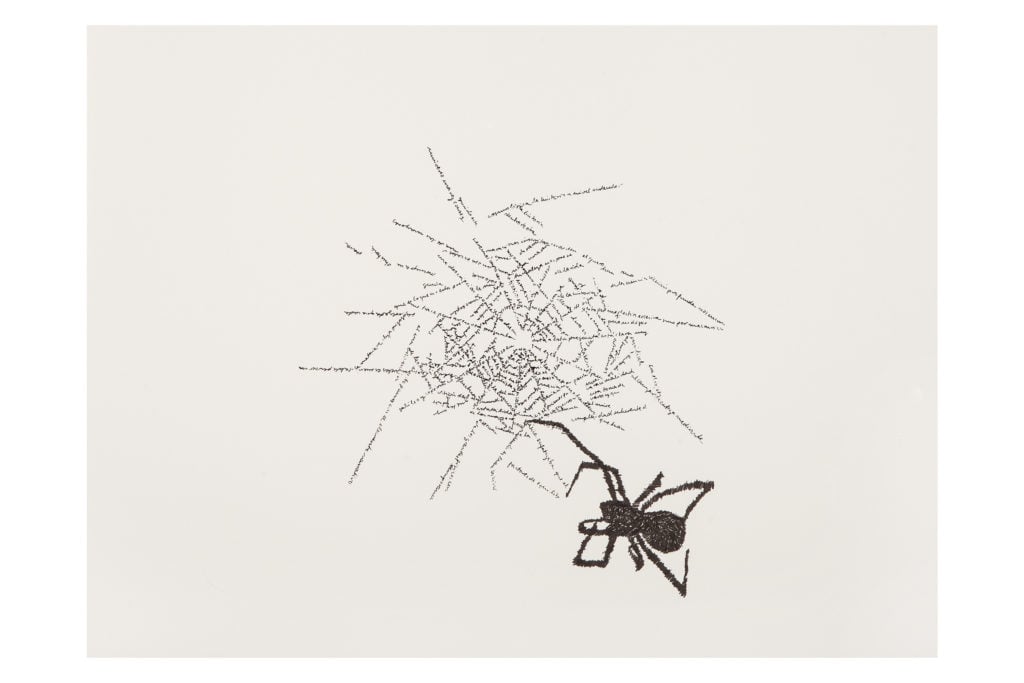
Johanna Calle, “Arañas/spiders.” Courtesy of Ruiz-Healy Art.
At San Antonio’s Ruiz-Healy Art, a single-artist presentation by Colombian artist Johanna Calle catches the eye. One wall features her “Arañas/spiders” series, a suite of seriagraphs, a tangled spiderweb featuring the words of an anthropological text by Maria Margarita Ruiz-Roges.
The artist has hand-drawn an eight-legged arachnid on each print, which are priced at $7,000 a piece.
Another female artist making a powerful visual statement is Ana Maria Pacheco, whose vividly-imaginative illustrations at Pratt Contemporary of Kent, UK, are populated by creatures that look like they stepped out of the pages of Maurice Sendak’s Where the Wild Things Are. Each one costs $1,200.
At London’s Flowers Gallery, Tom Hammick is showing painterly-looking prints from his artist-in-residence stint at the English National Opera. “They’re very layered,” the artist told artnet News of his woodblock based process.
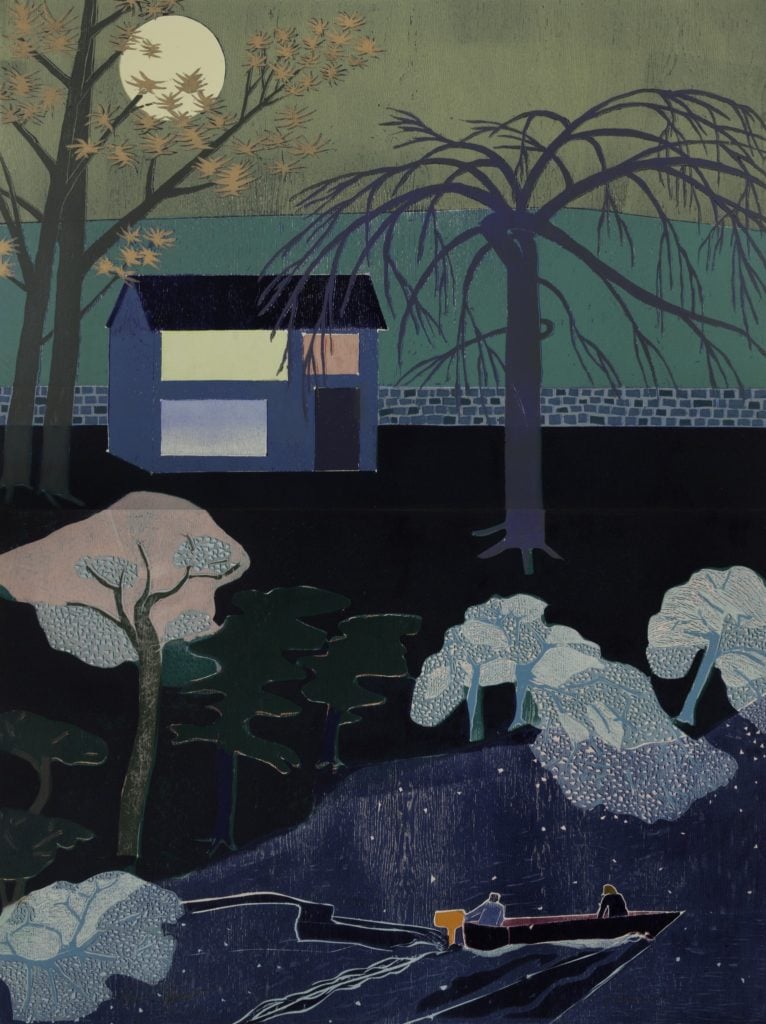
Tom Hammick, Violetta and Alfredo’s Escape (2016). Courtesy of Flowers Gallery.
Taking center stage at the booth is the large-scale work Violetta and Alfredo’s Escape, based on the opera Traviata. Hammick has rewritten the tragedy to give the ill-fated lovers their happy ending.
Meanwhile, Cleveland’s Verne Collection offers an impressive selection of work by contemporary artists from Japan, both native residents and North American expats.
Owner Michael Verne is offering two impressive specimens from the collection of his parents, gallery founders Dan and Mitzie Verne (grandparents of actor and artist James Franco, which perhaps helps explain his embrace of the visual arts.) Mitzie passed away at 93 in May, and her son is selling two large scrolls from Shiko Munakata’s most famous series, “The Ten Great Disciples of Sakyamuni.”

Shiko Munakata, from the “The Ten Great Disciples of Sakyamuni” series. Courtesy of the Verne Collection.
“He is the most important contemporary Japanese print maker,” Verne told artnet News, admitting he was quite spoiled to grow up with such masterpieces hanging on the walls of the family home. The Vernes developed an interest in the field while stationed in Yokosuka, Japan, during the Korean War. “My parents always collected what they liked—they used their eyes and their heart.”
“These are probably the best impressions you’ll ever see outside of a major museum,” Verne added of the works, which are priced at $75,000 each.
There’s also plenty of work by blue-chip contemporary artists on offer. New York’s Susan Sheehan Gallery, for instance, counts Chris Burden‘s disillusioned The Atomic Alphabet (1980), selling for $25,000, among its offerings.
The gallery is one of a number of booths that prominently features Andy Warhol, of course, with Details of Renaissance Painting (Sandro Botticelli, Birth of Venus, 1482), a 1984 piece that is priced at $125,000.
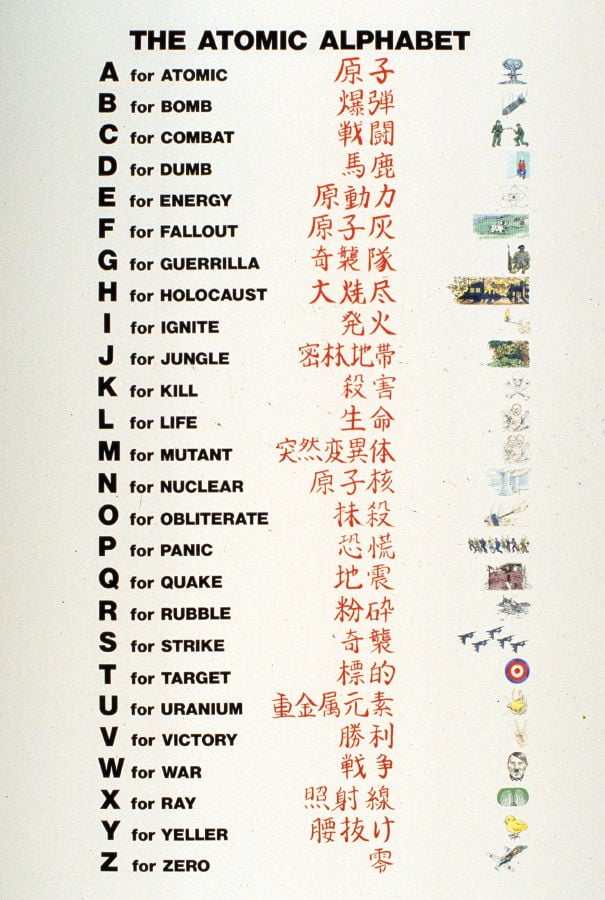
Chris Burden, The Atomic Alphabet (1980), $25,000. Courtesy of Susan Sheehan Gallery.
Other artists on offers from numerous dealers include members of the UK’s Grosvenor School artists, such as Sybil Andrews and Cyril Power. There is a big range for these prints, from $20,000 to $100,000, Richard Selby of London’s Redfern Gallery told artnet News, noting that “we were the first gallery to show them in the ’20s.”
Familiar images are easy to find throughout. Walking into the fair, you are greeted by an array of Pablo Picasso prints, the complete set of B1066 Portrait de Jacqueline aux Cheveux lisses (1962) linocuts, at New York’s John Szoke.
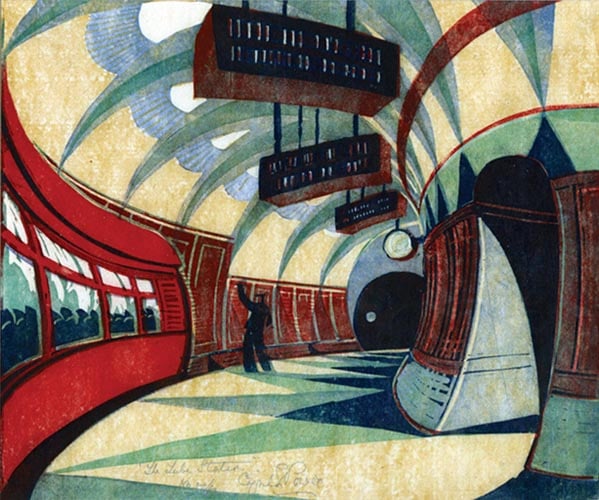
Cyril Power, The Tube Station (1932). Courtesy of the Redfern Gallery.
Priced at $300,000, the set shows the artist isolating different areas in the print as he works with four colors to create the final image.
“It’s just rare to find a set of individually printed states,” associate director Chuck Loesner told artnet News. “It’s almost like a printmaking class on your wall.”
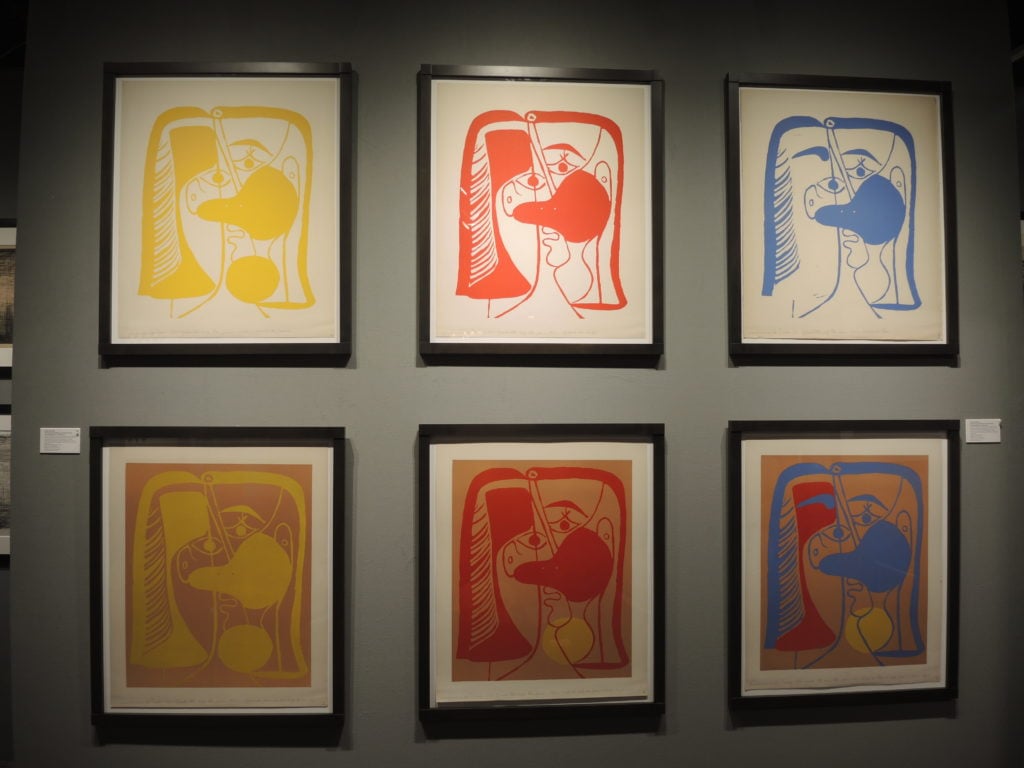
Pablo Picasso, B1066 Portrait de Jacqueline aux Cheveux lisses (1962). Courtesy of Sarah Cascone.
Other instantly recognizable works feature artists better known for their painting and sculpture. A small Yayoi Kusama print at New York’s Sragow Gallery, for instance, features the iconic black-spotted yellow pumpkin.
The beloved artist is not well-known for her prints, and “I understand they’re very hard to get,” said gallerist Ellen Sragow, pointing out that the work is a printer’s proof that features collaged elements with a ribbon border. “That makes it more special.”
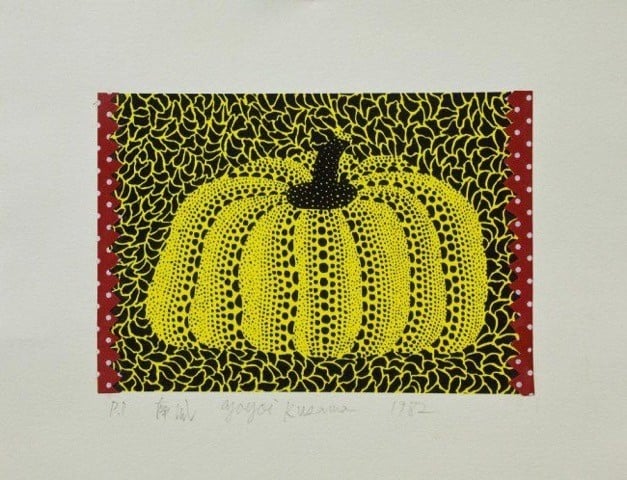
Yayoi Kusama, Pumpkin (1982). Courtesy of Sragow Gallery.
Other well-known works on view include one of the most famous prints of all time, Albrecht Dürer’s Rhinoceros, from 1515, at Frankfurt’s Kunsthandel Helmut H. Rumbler, which is priced at $220,000.
Emanuel von Baeyer also features an wide array of classic prints, in a booth dedicated to the collection of German book seller and collector Hellmuth Wallach.
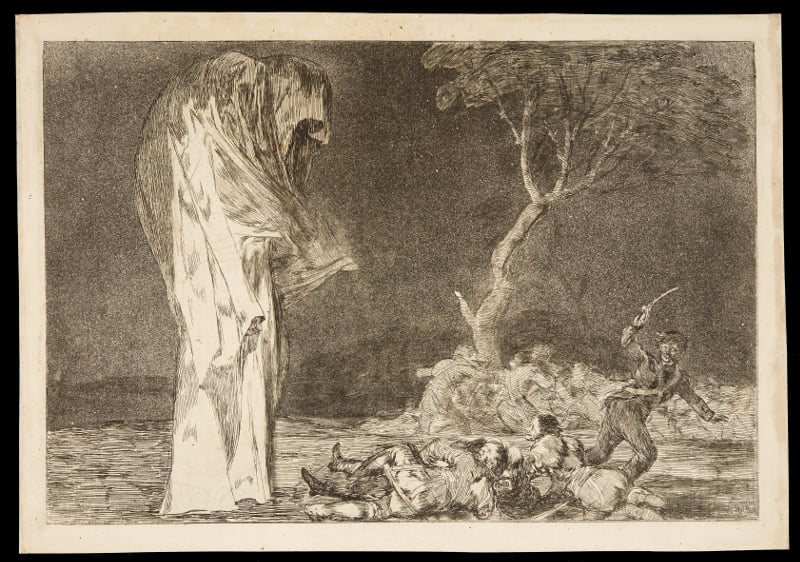
Francisco de Goya, Por temor no pierdan honor (Fear does not cause them to lose honour) / Disparate de miedo (Folly of fear), from the collection of Hellmuth Wallach. Courtest of Emanuel von Baeyer.
“I wanted to have it as a special event for this fair,” gallerist Emanuel von Braeyer told artnet of the collection, which has not been shown publicly in decades. He described as Wallach, who died in 1989, as an “old school collector” with a special interest in early German printmaking, and pointed to an impressive selection of works by Francisco de Goya.
New York’s David Tunick, Inc., has a similar focus on Old Masters, with Titian’s showstopping The Submersion of Pharaoh’s Army in the Red Sea taking up much of the booth’s main wall. Made from 12 blocks, it was perhaps the largest print ever made up until that time, David Tunick told artnet News. Moving the work out of the apartment of the owners (who purchased it at the gallery in the 1980s) and bring it to the fair was quite a challenge.
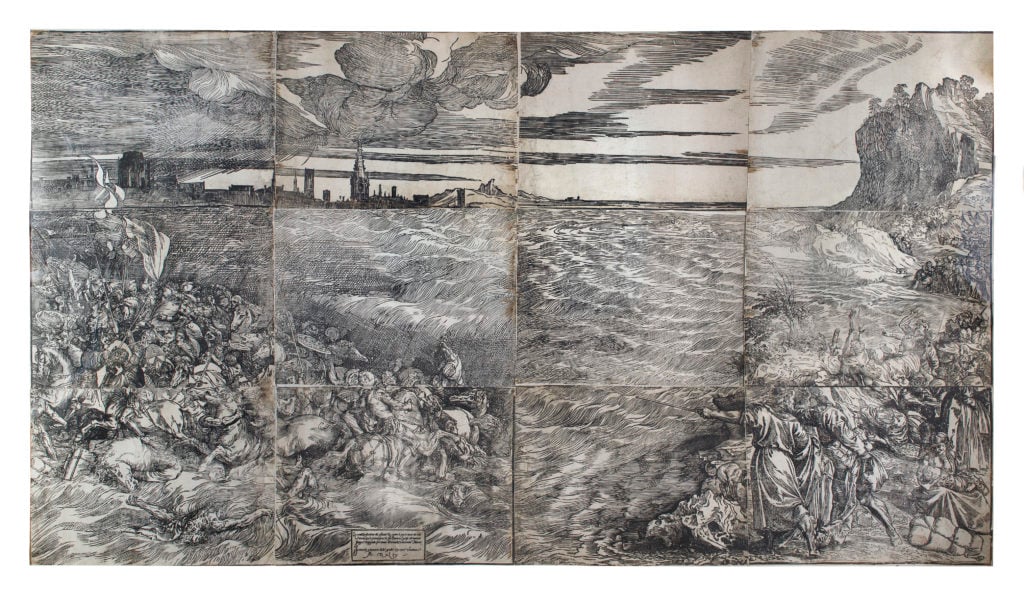
Titian, The Submersion of Pharaoh’s Army in the Red Sea (circa 1485). Courtesy of David Tunick, Inc.
An incredibly rare work of art, this copy was originally from the collection of William Ivins Jr., the founding curator of the print department of New York’s Metropolitan Museum of Art. Tunick wasn’t willing to name his asking price, but he claimed that another version that sold at Christie’s for $854,000 in 2013 “was in extremely poor condition.”
Tunick was also excited about a newly discovered state of Rembrandt van Rijn’s Woman Sitting Beside a Stove. A pillar in the background of the work includes a detailed design on the roundel that is not present in any previously-known versions of the print. “In Rembrandt scholarship,” he said. “it’s a major discovery.”
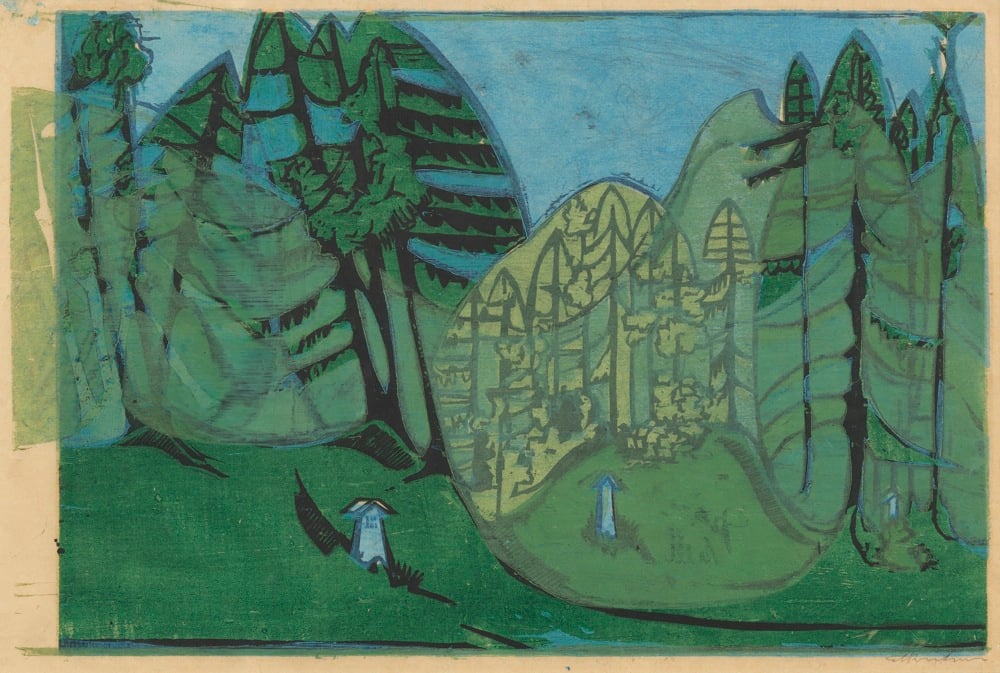
Ernst Ludwig Kirchner, Waldfriedhof. Courtesy of David Tunik, Inc.
Another highlight was Ernst Ludwig Kirchner’s Waldfriedhof, which combines painted elements with a color wood cut to stunning effect. “It’s unique—people here are going nuts about it,” said Tunik.
Blending the old and the new is Jeff Koons at New York’s Two Palms with his new print Gazing Ball (da Vinci Mona Lisa), which is selling for $50,000. The proceeds are all going to the Hillary Clinton campaign. (Koons has publicly endorsed the Democratic nominee.) It’s a 2-D version of the works at his current show at London’s Almine Rech, which places the kitschy reflective globes in front of reproductions of Old Master paintings.
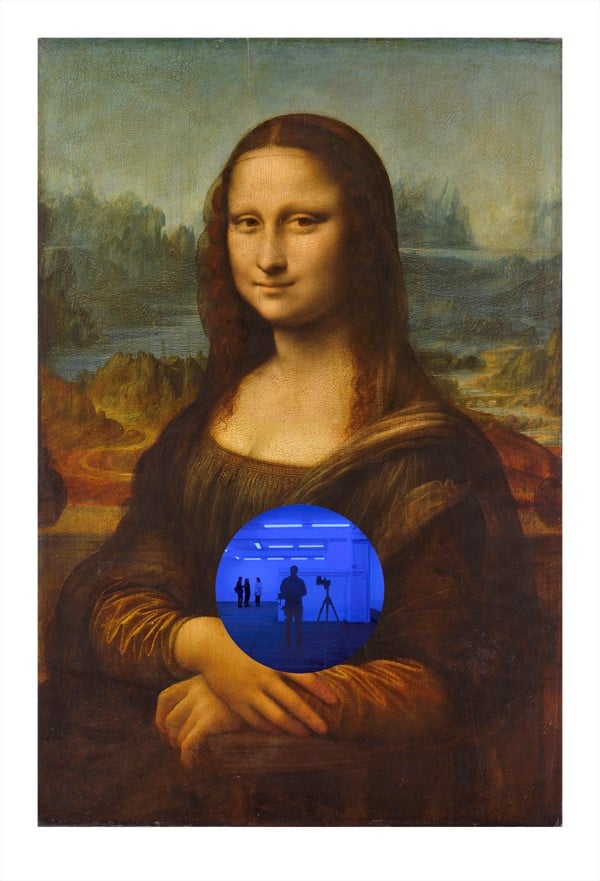
Jeff Koons, Gazing Ball (da Vinci Mona Lisa), 2016 (rendering). Courtesy of Jeff Koons.
“He wanted to figure out that same kind of effect with a flat surface,” Two Palms founder Evelyn Day Lasry told artnet News. “We’ve been working with him on the project for about eight months. It’s been very challenging figuring out that [mirror] element.”
Before the fair even opened, the print, featured at a recent Clinton fundraising auction hosted by Larry Gagosian, was already halfway sold out of the edition of 40.
The International Fine Print Dealers Association (IFPDA) Print Fair is on view at the Park Avenue Armory, 643 Park Avenue, November 3–5, 2016.